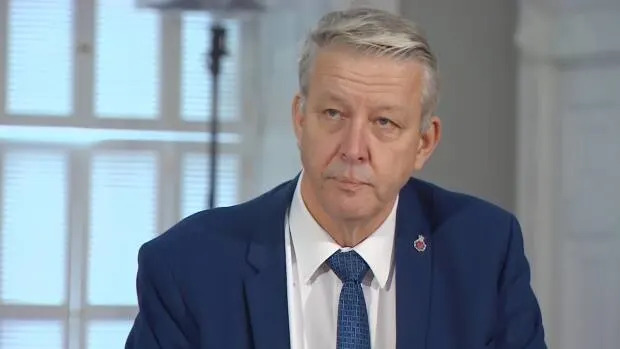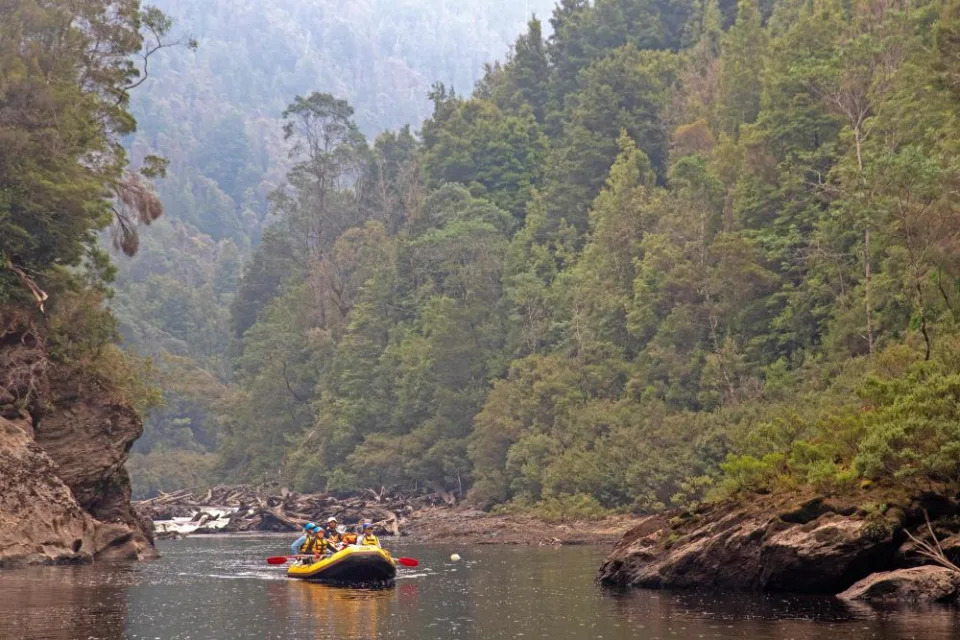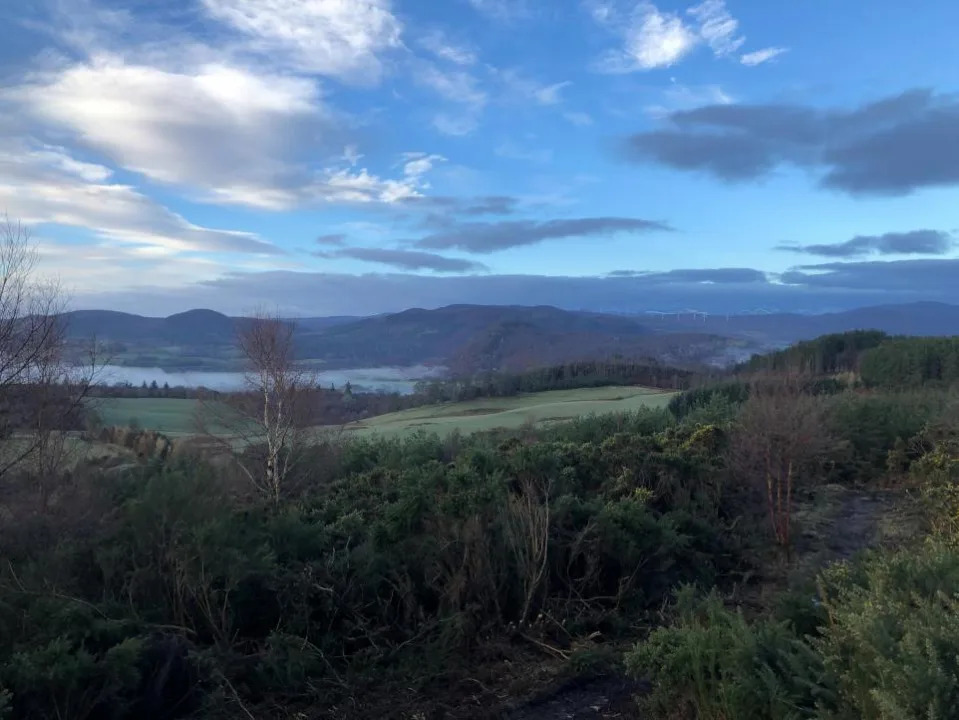Nova Scotians now need to be paying 50% of income on housing to qualify for rent supplement
CBC
Mon, April 3, 2023

Leigh MacLean said the rental subsidy is a stopgap measure, and more non-market housing is the solution. (Brian MacKay/CBC - image credit)
When housing support worker Leigh MacLean noticed a change on Nova Scotia's rent supplement application form, she thought it was a misprint.
The threshold to qualify for the program had been hiked from 30 to 50 per cent of a person's pre-tax income being spent on housing.
But it wasn't an error.
In late January, the province quietly changed the eligibility rules for the Canada-Nova Scotia Targeted Housing Benefit, known as the rent supplement program.
The definition of severe housing need was changed to only apply to those spending 50 per cent or more of their income on housing.
MacLean fills out the same form with clients dozens of times a week in her work as housing and homelessness team lead at Welcome Housing in Halifax. She said she and others in the sector weren't expecting a change.
"I think it's a drastic move and it's very secretive," MacLean said.
"I wish there would have been a little more transparency, community consultation around it because it just showed up on the new application and it wasn't discussed."
MacLean is concerned about the impact this change will have on the hundreds of clients served by her organization.
"I think if we're targeting 50 per cent [of income spent on housing], that's a lot less subsidies that they'll have to give out, ultimately," she said. "We're in a housing crisis, we're in a instability crisis. We really should be trying to help as many people as we can."

CBC
On Friday, Housing Minister John Lohr echoed the idea that Nova Scotia is in a housing crisis, but said the change to the program was made for budgetary reasons.
"We could see that the demand for the program was exceeding what the budget would offer," Lohr said in an interview. "So, we felt the need to prioritize ... this to those most in need, and that's why that decision was made."
Though the change was made in January, it just came to light publicly recently when Suzy Hansen, MLA for Halifax-Needham, asked Lohr about it in question period at Province House Tuesday.
Hansen told CBC she found out about the change from a constituent.
"When you think about who this is gonna affect the most, it's gonna affect those that are on low income, those that are struggling seniors, and they didn't tell any of us," Hansen said. "So, for me, it was really shocking."

Robert Short/CBC
Lohr said his department didn't consult community groups because a decision had to be made, but it wasn't done in secret.
"We put it right out there," he said. "It's on the website. Anybody applying could see the change."
What is the rent supplement?
The Canada-Nova Scotia Targeted Housing Benefit is a joint provincial-federal program that provides monthly funding to renters or homeowners who are determined to be in core housing need.
In order to qualify, a person needs to meet multiple requirements and fall under income thresholds. They also must be in "severe housing need" — the definition that was recently changed.
The 50 per cent of income spent on rent isn't calculated based on a person's actual rent, but based on the CMHC average rent for the area where they live.
For Halifax, this number was $1,449 for a two-bedroom unit. But MacLean said this number is usually much lower than actual rents in an area.
According to the Department of Municipal Affairs and Housing, the province is providing 7,000 rent supplements across the province. In Halifax, the monthly payment ranges from $403 to $963.
Old applications grandfathered in
Just two weeks ago, the Houston government didn't increase income assistance rates in this fiscal's budget, but instead said it would focus on "targeted supports" like the rent supplement.
A spokesperson for the department said in a statement that the Houston government has invested an additional $21.6 million in this fiscal year's budget to create at least 1,000 new rent supplements and "continue to support those we already have in place."
This means those who applied to the rent supplement program before the change took place on Jan. 27, 2023, will be grandfathered in if they meet the previous requirements.
"Recipients who continue to meet the eligibility criteria in place at the time they applied will continue to receive the benefit," spokesperson Krista Higdon said in an email.

Paul Palmeter/CBC
But those who spend 30 per cent of their income on housing and applied for the supplement after Jan. 27 are likely to be out of luck.
Brian Dauphinee is one of them. He recently found out he and close to 80 other tenants in his building on Quinpool Road in Halifax are being renovicted.
Dauphinee had been living in the same studio apartment since 2015, paying $637.50 monthly. He fears his pension won't be enough to pay the current rents in the city.
"It's going to impact me severely," Dauphinee said. "It's going to force me into making decisions about what kind of food I buy, what kind of medical service I can afford to get ... what clothes I can afford to buy."
Working with Welcome Housing, Dauphinee sent in an application for the rent supplement in March. But now he knows about the change to the eligibility requirements, he isn't confident his application will be accepted.
MacLean said application waiting times have slowed from around eight weeks to up to 14 weeks. For Dauphinee, this just means more time in limbo.
"I'll have to take it at that time," he said. "I'm so shocked, I can't plan beyond right now. I don't know what I'm gonna do."
CBC
Mon, April 3, 2023

Leigh MacLean said the rental subsidy is a stopgap measure, and more non-market housing is the solution. (Brian MacKay/CBC - image credit)
When housing support worker Leigh MacLean noticed a change on Nova Scotia's rent supplement application form, she thought it was a misprint.
The threshold to qualify for the program had been hiked from 30 to 50 per cent of a person's pre-tax income being spent on housing.
But it wasn't an error.
In late January, the province quietly changed the eligibility rules for the Canada-Nova Scotia Targeted Housing Benefit, known as the rent supplement program.
The definition of severe housing need was changed to only apply to those spending 50 per cent or more of their income on housing.
MacLean fills out the same form with clients dozens of times a week in her work as housing and homelessness team lead at Welcome Housing in Halifax. She said she and others in the sector weren't expecting a change.
"I think it's a drastic move and it's very secretive," MacLean said.
"I wish there would have been a little more transparency, community consultation around it because it just showed up on the new application and it wasn't discussed."
MacLean is concerned about the impact this change will have on the hundreds of clients served by her organization.
"I think if we're targeting 50 per cent [of income spent on housing], that's a lot less subsidies that they'll have to give out, ultimately," she said. "We're in a housing crisis, we're in a instability crisis. We really should be trying to help as many people as we can."

CBC
On Friday, Housing Minister John Lohr echoed the idea that Nova Scotia is in a housing crisis, but said the change to the program was made for budgetary reasons.
"We could see that the demand for the program was exceeding what the budget would offer," Lohr said in an interview. "So, we felt the need to prioritize ... this to those most in need, and that's why that decision was made."
Though the change was made in January, it just came to light publicly recently when Suzy Hansen, MLA for Halifax-Needham, asked Lohr about it in question period at Province House Tuesday.
Hansen told CBC she found out about the change from a constituent.
"When you think about who this is gonna affect the most, it's gonna affect those that are on low income, those that are struggling seniors, and they didn't tell any of us," Hansen said. "So, for me, it was really shocking."

Robert Short/CBC
Lohr said his department didn't consult community groups because a decision had to be made, but it wasn't done in secret.
"We put it right out there," he said. "It's on the website. Anybody applying could see the change."
What is the rent supplement?
The Canada-Nova Scotia Targeted Housing Benefit is a joint provincial-federal program that provides monthly funding to renters or homeowners who are determined to be in core housing need.
In order to qualify, a person needs to meet multiple requirements and fall under income thresholds. They also must be in "severe housing need" — the definition that was recently changed.
The 50 per cent of income spent on rent isn't calculated based on a person's actual rent, but based on the CMHC average rent for the area where they live.
For Halifax, this number was $1,449 for a two-bedroom unit. But MacLean said this number is usually much lower than actual rents in an area.
According to the Department of Municipal Affairs and Housing, the province is providing 7,000 rent supplements across the province. In Halifax, the monthly payment ranges from $403 to $963.
Old applications grandfathered in
Just two weeks ago, the Houston government didn't increase income assistance rates in this fiscal's budget, but instead said it would focus on "targeted supports" like the rent supplement.
A spokesperson for the department said in a statement that the Houston government has invested an additional $21.6 million in this fiscal year's budget to create at least 1,000 new rent supplements and "continue to support those we already have in place."
This means those who applied to the rent supplement program before the change took place on Jan. 27, 2023, will be grandfathered in if they meet the previous requirements.
"Recipients who continue to meet the eligibility criteria in place at the time they applied will continue to receive the benefit," spokesperson Krista Higdon said in an email.

Paul Palmeter/CBC
But those who spend 30 per cent of their income on housing and applied for the supplement after Jan. 27 are likely to be out of luck.
Brian Dauphinee is one of them. He recently found out he and close to 80 other tenants in his building on Quinpool Road in Halifax are being renovicted.
Dauphinee had been living in the same studio apartment since 2015, paying $637.50 monthly. He fears his pension won't be enough to pay the current rents in the city.
"It's going to impact me severely," Dauphinee said. "It's going to force me into making decisions about what kind of food I buy, what kind of medical service I can afford to get ... what clothes I can afford to buy."
Working with Welcome Housing, Dauphinee sent in an application for the rent supplement in March. But now he knows about the change to the eligibility requirements, he isn't confident his application will be accepted.
MacLean said application waiting times have slowed from around eight weeks to up to 14 weeks. For Dauphinee, this just means more time in limbo.
"I'll have to take it at that time," he said. "I'm so shocked, I can't plan beyond right now. I don't know what I'm gonna do."










